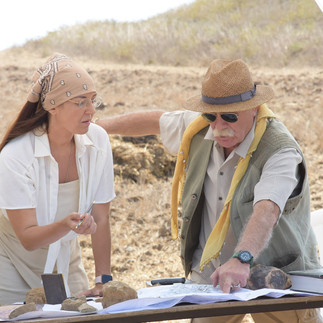THE VOICE OF THE PAST, Directed by SETENAY URUÇ
- Tokyo Cine Mag

- Jun 1, 2022
- 3 min read
Project Title (Original Language): GEÇMİŞİN SESİ
Project Type: Short
Runtime: 14 minutes 57 seconds
Completion Date: January 1, 2022
Country of Origin: Turkey
Country of Filming: Turkey
Language: Turkish
Shooting Format: Digital, 35 mm
Film Color: Color

The Epic of Gilgamesh is the first book written in the history of mankind. There are no books or texts written before. This is the first extraordinary detail about it.
In the records, it seems that the heroic king of the Sumerians, Gilgamesh, lived between 2000/4000. Written ten centuries before Homer's Odyssey, this extraordinary epic has a language that can be easily read and understood in modern times of today. It wouldn't be wrong to say that this text acts upon every century. The second one is its extraordinary details.
It has an enormous influence on both the Old Testament and Greek mythology. We can say that almost all stories begin with the Epic of Gilgamesh first. The myth of Noah and the Flood was directly taken from the epic.
In my short film called The Voice of the Past, strict attention was paid for shooting the highlighted messages in real places in a historical order. The Museum of Ancient Oriental Works of Istanbul Archaeological Museums is full of Sumerian tablets and information about that period. And for these strong reasons, most of the scenes were shot in the Istanbul Archeology Museum. The first tablet of the epic provides a real journey to 2000 BC through the female character in the film.
The archaeological excavation site and the Sumerian Tablets were prepared in special environments as reflections of the real ones. Each shooting location was meticulously protected by respecting the work itself and preserving the essence of the authenticity.
The most important musical works that complete the scenes were used, such as George Frideric Handel's magnificent aria “Lascia Ch'io Pianga” and Arnold Böclin's "Die Toteninsel" (Isle of the Dead).
Which music is used in the scenes used in the movie is very important to me. I used the musical work of valuable artist Tan Taşçı in the last 3 scenes that make up the final scene. I thank him for his support of the film.

We are all connected to each other with visible and invisible ties since the world was created. And every hero is definitely a sole representative of an adventure that progresses towards their own creation while going through various transformations in their own journey. They are unique.
Director's Statement:
The mourning, which is the common heritage of humanity, and the mourning processes that vary according to the culture have shaped the mythology. This deep bond is one of the strongest motivations of the film.
The cast consists of people who are amazing at their job and they reflect the same meticulousness in the script preparation. Dear theater artists Orhan Aydin and Muhlis Asan are among the building blocks of the film. And Sumerologist dear Muazzez Ilmiye Cig has added depth and invaluable meaning to the film with both her academic counseling and her first acting experience. I am grateful to all my performer friends and the team.

Summary of the film:
Gilgamesh, who lived between 2000/4000 BC, is the heroic king of the Epic of Gilgamesh, the first written text in history. He grieves deeply after the death of his beloved friend, his dearest friend Enkidu. At the end of this sorrowful period, Gilgamesh makes a decision and goes on a journey to seek immortality standing against the Gods. At the end of this very difficult, even impossible journey, he finally meets Utnapishtim…
Sinemis, a female character living in the modern years of 2021, has a successful career and a happy life. Until one evening, when she loses all her beloved ones in a car accident... During this sad and hurtful period, she laments deeply, then she decides to end her life unable to bear the weight and effects of all these emotions. But life will offer her a second chance when she least expects it. In the script, we see the intersecting paths of two different characters, the reasons for them to come together, and where they reach at the end.


















Comments